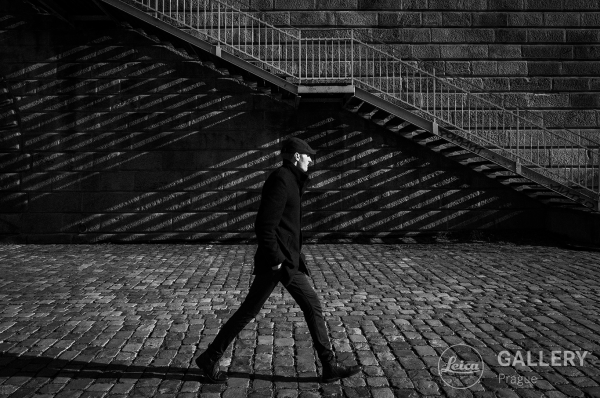
The photography beginnings of Jan Mihaliček (*1965) fell to the time before 1989. He primarily photographed the Czechoslovak community that revolved around skateboarding and snowboarding and since 1987 collaborated with multiple samizdat projects. From December 1989, he worked as a photojournalist for „Lidové noviny“ newspaper. He photographed not only in Czechoslovakia but in various other countries worldwide. After the departure of the Soviet troops from Afghanistan, he traveled there with Jaromír Štětina to create a series of reportages through which he was the first to uncover the previously unconfirmed existence of Russian prisoners from the Afghan war in Pakistan. He first attended humanitarian trips to wartime Yugoslavia and Nagorno-Karabakh with the „Lidové noviny“ newspaper Foundation which later transformed into a well-respected organization, „Člověk v tísni“ (People in Need). In 1994, he was a part of the preparatory team of the news magazine Týden and he was one of its photographers. In 1997, he won the 1st prize in the Czech Press Photo competition in the category of current report – reportage for his report from flooded Ostrava. At the beginning of the new millennium, he switched to becoming a freelance photographer which remained his occupation till today. Currently, he takes an interest in social thematic as both a photographer and a cameraman. He develops his work by using classic black-and-white document in the spirit of the traditions of humanist photography.
The exhibition ‘To my Prague citizens’ follows up on the 2018 exhibition ‘I (don’t) understand my Prague citizens…’ in Café Kampus. The author photographs Prague daily, hence, the exhibition displayed in the Leica Gallery Prague Café consists of newly taken photographs all captured within the last year. The connection of Leica camera and black-and-white, rather contrasting tonality, is the author’s signature. The photographs oscillate on the verge of documentary photographs, street photography and classic humanistic photography with artistic accent, with the search for specific lighting conditions, and most importantly the contrast of light and shadows.
Jan Mihaliček
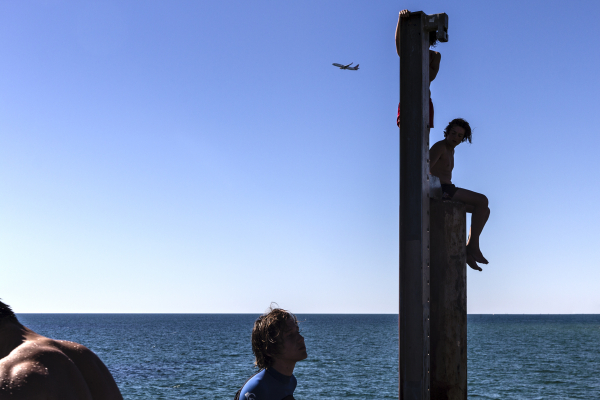
The immersive and wide-ranging photographic world of Vladimir Birgus opened its doors to colour back in the 1980s, that is to colour in its full saturation and evocative messaging, during a time when inventive use of colour was highly unusual in the context of Czech documentary photography. His colour configurations were since the beginning deliberate, conceived almost like a painting. Birgus’ often ghostly scenes not dissimilar to staged modulation despite not being conceived as such were conceptualised with careful attention to colour and specific lighting which supports the tones and plasticity of the visual work. Earlier photographs were laden with yellow, blue and black, with the later emergence of increasingly intense red coupled with a gradual near disappearance of yellow. Red is an extroverted colour, commanding attention and rousing emotions. The same can be said of Birgus’ work generally, although it is also headed towards calm and a certain type of visual contemplation. We realise this most clearly when examining photographs that don’t capture people, surprisingly to some. Here colour intensity reaches its maximum, the empty, almost abstract spaces are however charged with emotion and concealed explosion of possible interpretations and mental narratives. Red and Blue, an almost Stendhalian paraphrase, draw us into the photograph to the point, where we viewers become another actor in the photographed reality, not in the least indifferent to the event photographed. Somewhere in those moments, art is born.
The beginnings of Birgus’ work date back to 1972. From his then-black-and-white photography, we can see the photographer’s intentional search for situations which outgrow humanistic documentaries towards a subjective visual narrative open to individual interpretation. With the advent of colour photography in the 1980s, this quality in Birgus’ photography deepened. It is safe to say that moments and situations unfold slightly differently in colour as opposed to in a monochrome photographic world. If classic black-and-white photography tends to work with a snapshot of a very short time and with a certain form of aesthetic composition often leading to a condensed visual shortcut, colour, particularly in Birgus’ work, expands the mental field of the image. Time expands and stretches out, colour doesn’t rush, and components rarely included in black-and-white narrative come into play or have life breathed into them, as they might seem banal or uninteresting in the black-and-white composition. The photogenic nature of colourful scenes evokes a sense of theatricality, stagendness and unreality which is paradoxical since the truthfulness of colour ought to be more complex. I believe Birgus knows in which emotional and compositional plane colours work. He doesn’t rush to make a point – after all, he resisted this even in his black-and-white work. He knows how to condense and lighten an image while maintaining visual intensity and narrative expressivity. His work can then have many points, or hints of meaning. He likes to ‘compose’ in planes, drawing on the geometry of shadows and surfaces. Surfaces and planes naturally divide and give rise to space; sometimes we must wonder if it is no longer about abstract hints, about emptying or the autonomy of colourful narrative. Sometimes when I gaze at Birgus’ photographs, I feel a comforting warm touch of sunset’s rays and the pulse of the day quieting and slowing, with contours sharpening as the day passes by. I notice the shapes and am warmed by the possibility of imagining narratives and events. Yet Birgus works masterfully with dark and the harshest of lights as well. He has an eye for situations where characters are in shadows or their fragments seem motionless, yet so much is happening narratively. I’m glad Birgus detests the haze and insists on firm demarcations. The bounds of light and shadow seem acceptable only when contrasted to the maximum. The humour of Birgus’ photographs remains in the distinct smile of colour where composition, clustering, shadow and gesture are definitive in a way only colour photography can present. And Vladimir Birgus as well.
Martin Dostal, curator

To get in the immediate proximity to people who, in the modern, technology-focused era still live in a traditional way of life and are highly connected to nature is something, that piqued my interest. Hopefully, I managed to capture something in their glances, that would be hard to find in our own. I sincerely hope, that their faces and expressions will have the same intense effect on you, as they do on me.
I captured these photographs in parts of Ethiopia, where the southern tribes Arbore, Dassanech, Hamar, Nyangatom, Suri, and Konso live.
Veronika Mašková
Veronika Mašková loves photography and devotes herself to the art. She is truly a master of many genres. She is a fitness trainer, alpinist, traveller, and one of the founding members of the street photography group called ‘Streetphoto is not only a click on the street’. She continuously returns to the premises of Leica Gallery Prague, whether as an author or a curator.
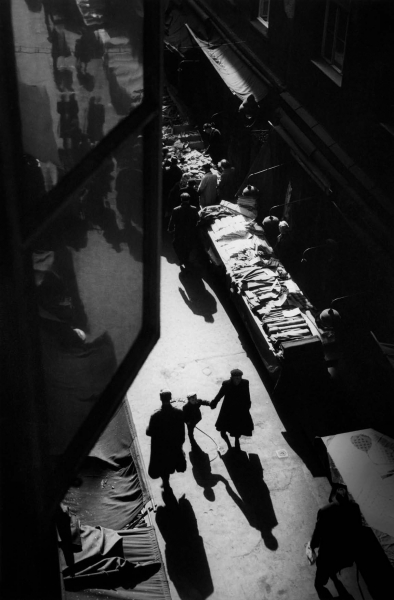
The exhibition ‘The Archive of Hidden Meanings’ demonstrates various showcases of both Czech and Slovak documentary photography, as presented by the works of three authors succeeding by generations. More specifically, they are the works of Pavel Dias (1938-2021), Tibor Husár (1952-2013), and Karina Golisová (*1997). In the center of their focus is an individually thinking and acting person who also plays a part in numerous social circles. Hence, a person who is a part of both ‘small’ and ‘big’ historical events. The combined quality of all three authors, despite their different time-space starting points, is nonchalant and yet brilliantly pointed conveying the mood and atmosphere change, transformation is terms of society, but even inside of an individual.
The exhibition ‘The Archive of Hidden Meanings’ is the initiative of the Foundation of Milota Havránkova, which supports the annual creation of a project presenting the work of a pair of already established photographers from the Czech Republic and Slovakia, supplemented by the work of a beginner artist.
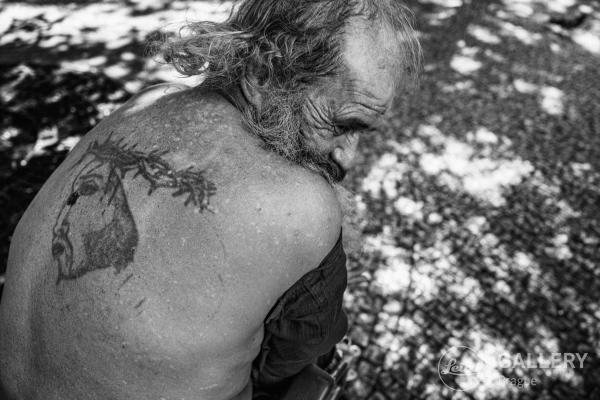
STORIES // FACES
Life stories written in the faces of both known and unknown men
“The creation of a single world comes from a huge number of fragments and chaos.”
Hayao Miyazaki
Kevin V. Ton follows up and develops on the tradition of classic documentary photography, the resulting images are black and white, mostly in a classical 35 mm film format. He combines very close details, still life and its surroundings, and even a reporting approach. He perceives photographs as ‘expanded memory of the mankind’ without which certain situations would not be recorded. ‘I think about what, where, and why I take photos, but I also photograph based on my intuition. I take in the surrounding events, but I never photograph in a chaotic matter. The preparation before I go somewhere is very important to me. I conduct research, I find out what that given place offers, and then I mostly work with intuition. However, it is crucial to combine both logic and emotion.”
(Interview for the cultural magazine UNI, May 2023 – Helena Musilová, chief curator G HMP)
Kevin V. Ton is a freelance photographer and a recipient of numerous awards. During his life, he dedicated his time to live, black and white photography with a focus on humanistic, documentary photography, especially in terms of long-term projects. He has been dedicated to street photography for so many years now.
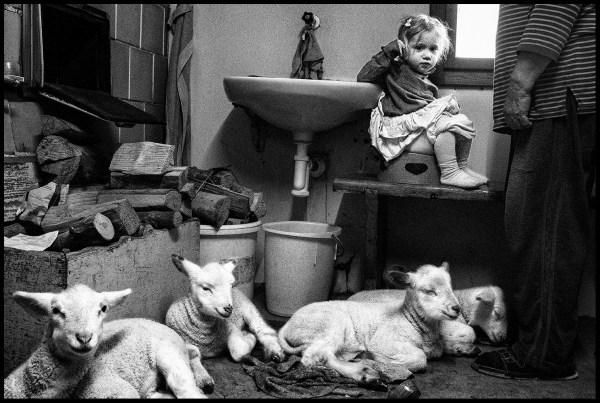
Wallachia, my homeland
The photographer Josef Vrážel (*1966) was born in Karolinka in Vsetín region in the beautiful countryside of Wallachia where he has worked and photographed his whole life. He loves and has a deep knowledge of his homeland which is reflected in the depth of the photographs of people. These photographs are not only simple documentation but perfectly put-together images filled with stories, memories, and the essence of the location where the artist is based, and as he states, he would never leave. Vrážel knows every single part of Wallachia, his homeland. He is well-acquainted with his ‘nice countrymen’. He was aware of their joys, losses, and even hopes. He was born with a great gift of empathy. Thanks to this gift, he can seep through to the hidden privacy, that people offer to him almost on a silver platter, hence, allowing him to capture their images in a way that reflects precisely who they are. His photographs are a pure showcase of the humanity of the beautiful people of Wallachia. Moreover, Vrážel can act as a witness to their life and capture everything for future generations of lovers of photography to enjoy.
You can find amazing photographers both in Wallachia and at different places in Moravia. This includes but is not limited to Jindřich Štreit, Gustav Aulehla, Ostravian Viktor Kolář, or Jaroslav Pulicar who recently had an exhibition at Leica Gallery Prague. Still, I believe, that Jožka (a nickname that is used by all his friends) is the purest one of all. Not only is he a ‘pure Wallachian through and through’, but he is also a very perceptive photographer. An observer, who doesn’t take photos in secrecy but rather uses patience and emotion that can create beautiful photos in any situation of his fellow Wallachian countrymen. He truly has a gift and can fully use it.
Jaroslav Kučera, curator
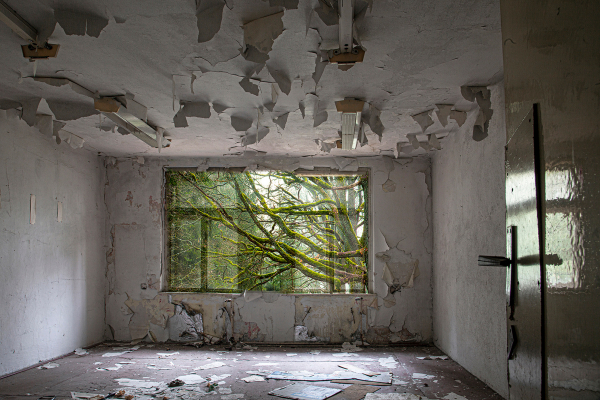
Eva Heyd’s photographic work and artistic progress are closely connected to her personal life and the paths she chose to take, as well as the era she lived through and experienced.
Together with other photographers, who got together at the Strahov Photo Club in the seventies, she focused on documentary photography. Portraits and nudes from the Women series are an exceptionally sensitive testimony to the lives of the author’s contemporaries, who allowed her to enter their privacy and their inner world.
A significant turning point in Eva Heyd’s life was her emigration to the USA in the mid-80s. Life in New York with all the freedoms that the city offered, in contrast to her native city Prague, which was under totalitarian rule at the time, also brought the author new professional insights. The mixture of impressions from the city was one of the inspiring stimuli for creating photomontages, a technique which she already started to use in Prague. Another source of inspiration was her collaboration with major New York art museums, for which she photographed art objects for many catalogs. To this day a combination of photography and glass is an integral part of her free form art.
Another important time in the author’s life journey was the year 2005. After twenty years, she returned to the Czech Republic and settled in Rožmitál pod Třemšínem. Moving from a bustling metropolis, she found herself in the privacy of a small town. This fundamental change brought new themes into Eva Heyd’s photographic artwork. She gradually became acquainted with the mysterious landscape of the Brdy region and was able to capture the atmosphere of places that encourage quiet contemplation in her photographs. Her lifelong interest in history continues to attract her to places marked by human activities that are centuries old and also recent, both affecting the landscape in some way. How to now perceive the energy in a region that was so influenced by the religiosity of the Holy Mountain, where in the past tens of thousands of believers pilgrimaged to see miracles of the Virgin Mary? How to depict the contradictions in the actions of people who built industrial structures and eventually abandoned them? How to capture the feeling that deteriorated places evoke? How to suggest associations that a detail from nature elicits?
Reality versus emotion. The fundamental contradiction, a principle that connects Eva Heyd’s work in all stages of her creation, just like photomontage, layering impressions, thoughts, memories, and knowledge. The images created by the author contain messages that inspire our individual search for connections.
Hana Ročňáková
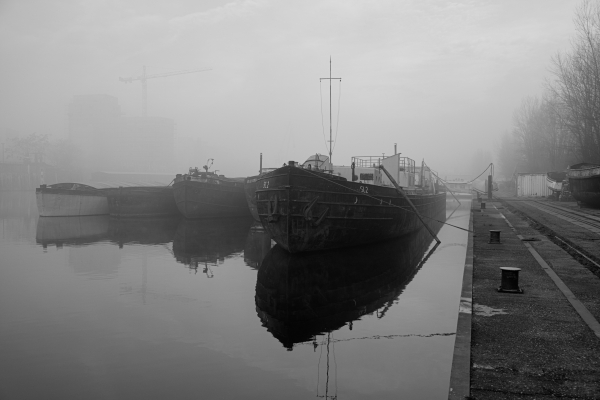
showcases evidence of the changes that occurred in Holešovice, located in Prague, that are displayed in his photographs. He does so because of a personal connection to this location formed in the past.
He is an observer of the vigorous change that the neighborhood is currently undergoing. He captures photographs of places that are transforming dynamically.
As the author states: „From the once authentical neighborhood infused with the magic of working-class periphery becomes a soulless city of spiritless offices and expensive residencies. I see, how the old Holešovice are disappearing right in front of my eyes and are taking on a new form. In my series Goodbye Holešovice, I attempted to capture a fragment of the old Holešovice as well as their current form, which seems foreign to me. With the same named book, I am parting with a period of my life and closing one of the photographic themes. Goodbye, Holešovice“.
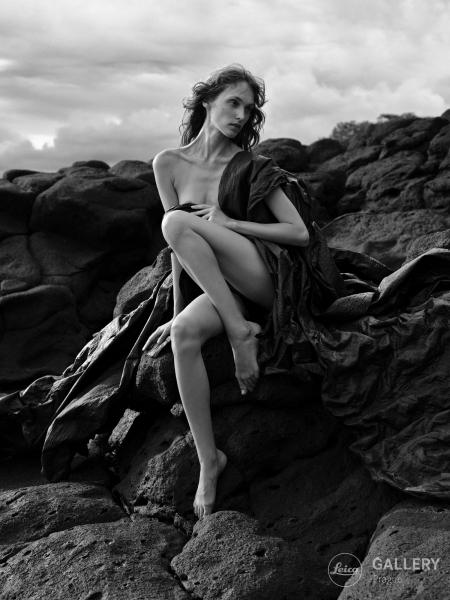
13 years have passed since Lukáš Dvořák’s last exhibition in Leica Gallery Prague. He worked 13 years on his latest book of the same name which was published in 2021.The number 13 is essential for Lukáš Dvořák and accompanies him all his life.How else then to call his autumn cross-sectional exhibition which not only features his latest work, which is all displayed in large formats?
The number 13 seems to be fated for the photographer Lukáš Dvořák. Even though, his book “XIII” was published two years ago as a tribute to the many years of his artistic journey, the same named exhibition in Leica Gallery Prague was a pure coincidence. The name refers to the reality, that this is the author’s first exhibition after thirteen long years in his preferred gallery. While Lukáš Dvořák is a prominent and internationally recognized personality in the field of fashion photography, it is precisely the nude photography that became the subject of his free creation while also becoming his lifelong passion. It is his passion that drives him to constantly discover new perceptions of the reality that surrounds us. In his work, he always attempts to prioritize nature and the attempt to capture women in their purest form of beauty. He doesn’t only stick to the physical beauty and more so accents the mental beauty, as in the spirit of the Greek attempt to get closer to God. Every photo is the result of a persistent effort to find a sophisticated depth and certain expression, where the woman becomes the best version of herself. Nudity then becomes a reference to nature and the acceptance of one’s body, in which we can find balance, self-confidence, and relaxation. Together with the characteristical black and white composition of the photographs, that allow the audience to concentrate on the atmosphere of that given moment, the nudity shows a way to get the photos rid of the links to a specific time period. They therefore become intentionally temporally and spatially unanchored. Everything, including the details, the position of the fingers, shadows, or hair in motion must come together in perfect harmony. In addition to the choice of models and location, Lukáš’s creative process often includes his own imagination and a sort of conscious dreaming, during which he designs sets with unusual props. These include a medicine ball or wooden butterfly wings that he either buys or has custom-made. He constantly searches for inspiration in both the inner and outer world, connects them, and thus introduces new and improbable elements into the nudes. There are countless opportunities out in the universe, as he says. Everything we create already exists and we are only discovering it. Through small steps and experiments, Lukáš Dvořák constantly expands his horizons and set of styles with new possibilities and procedures. And so he is slowly fulfilling his work of a lifetime
Vojtěch Fiala, curator
Lukáš Dvořák (*1982 in Prague) at the beginning of his career dedicated all his time to painting and music. It wasn’t until 2004 that he was introduced to photography. He is a lead fashion photographer who collaborates with several magazines (e.g. Harper’s Bazaar, Marie Claire, Vanity Fair, Playboy, GQ, Cosmopolitan, Woman, and others). As an author of artistic photographs, he mainly prefers black and white photography in his works, which is strongly contrasting and impressive in his presentation. Moreover, his photographs carry a characteristically intense emotional and sensually erotic drive.
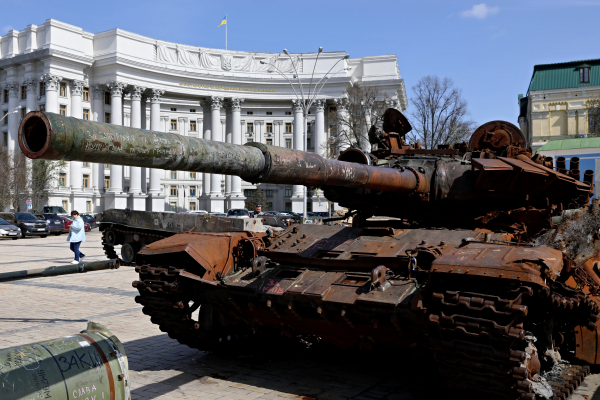
In May 2023, the Czech photographer Veronika Mašková visited the capital of Ukraine – Kyiv, which is the subject of her series of documentary photographs with the same name. With her photos, she manages to depict the horrors of war without explicitly expressing them, the photos give us a suffocating atmosphere of wartime Kiev, but tinged with hope.
The collections of photographs of Veronika Mašková, which were created during her week-long visit to Kiev in May, are as they are and cannot differ from the message they convey. It is impossible to displace the photographs from the hints and atmosphere of the extremely cruel aggression of the army. You won’t encounter happiness or a carefree atmosphere; although, a receptive soul might just manage to do so. The author managed to capture fragments of human belonging, pain, and all pervading reverence from the loss of a loved one. Primarily, we can encounter neverending hope, desire, and strong faith in an imminent end of the fury of war and immense human suffering, which can never be forgotten. Despite all this, Kiev, a wonderful and modern European city, attempts each day to live its life despite the everpresent war. We can encounter with the utmost respect the happenings that are gently and oftentimes even covertly mirrored within the photographs. She deserves our thanks and respect for this gentle testimony and her courage.
Michal Mihal
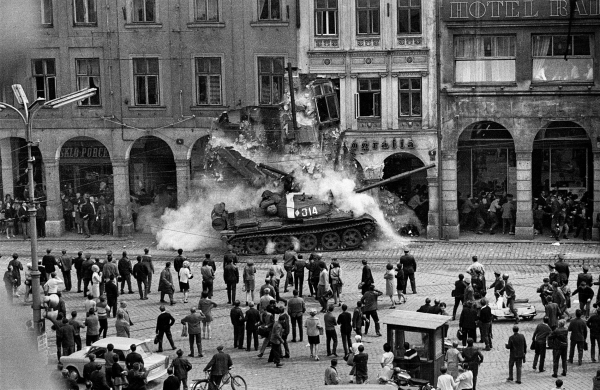
During the night of the 20th to the 21st of August 1968, Czechoslovakia was invaded by a half-a-million army of the five states of the Soviet bloc – Soviet Union, Bulgaria, Poland, Hungary, and the German Democratic Republic. It was conducted with heavy army machinery including tanks. Therefore, the decision of Moscow harshly and ruthlessly ended the Prague Spring, which attempted to democratize the totalitarian régime. The citizens were horrified and fought with their bare hands in the streets against the armed occupiers. The most dramatic moments took place in front of the building of the Czechoslovak Radio in Prague. This occurred because of the fact, that people attempted to block the occupation of the radio station by creating barricades made from trucks, buses, and their bodies. However, clashes with the occupiers also occurred in many other locations of the republic. The aggressive and reckless behavior of the oppressors took its penalty. In 1968 a total of 137 Czechoslovak citizens died and more than 500 were badly injured because of the occupiers.
The group exhibition of the 26 photographers is a reminder of this year’s 55th anniversary of the historical event.
Dana Kyndrová, curator
REMEMBERANCE AGAINST DEATH
Debates around the significance of the Prague Spring are fruitful not in the least because they keep the event’s memory alive. Interpretations of the time of Prague Spring differs significantly based on the authors’ worldview. Some see it as an example of the common Western post-Munich notions of resistance; talking the talk without walking the walk. Others opine that true understanding requires time and question why the collective Western forces should have taken a position in the events of August 1968, when it was not pleaded for, much less imagined by the people of socialist Czechoslovakia. All are united in the belief that the significance of 1968 spans beyond a single generation and wasn’t influenced solely by international geopolitics, but also by the behavior and actions of Czechs and Slovaks.
Today we live in a chasm between two cultures; a culture of rememberance and a culture of forgetting. We must not succumb to the allures of the culture of forgetting. We can draw on more than just our cushy and comfortable contemporary experience. The idea of continuity is what allows us to not stray when navigating the complexities of lesser understood historical events. Through our dedication to rememberance we can keep alive our notions of historical heroes and cowards, who aid us in understanding our current world – that is, unless we forget them.
In the 55 years since the months of the Prague Spring, the involvement of many figures showed to be less substantial then they seemed at the time. Who can now truly be interested in the nature of socialist reforms that took place in the sphere of communist social models? Instead of socialist ideological philosophy we now center our discourse on the themes of freedom, rights to self-determination and belonging to a culture or civilisation. The experience of a civilisational threat that the Soviet occupation of August 1968 posed erased any doubts on whether our place is in the West or in the Russian world, as some stubborn and unteachable malcontents continue to ponder.
The unanswerable question remains of whether “passive resistance” was the appropriate response to the violence enacted on Czechoslovakia by its so called allies. For next time, the choice of active, forceful and armed resistance might be considered. It is more of a question of the national temperament than one of calculated logic and weighing of chances. Czechs don’t like to get carried away with flamboyant and grandiose gestures, much less with acts of mass heroism. The Czech flavor of survival is different from our neighbors’; in key moments we can produce from our midst so-called lightbearers who draw the line in the sand beyond which one can’t morally retreat. Their death redeems the nation’s sin of hopelessness: from Hus and the paratroopers of Operation Anthropoid to Palach and Zajíc. One lightbearer isn’t too little or too much, yet lost is a nation where not a single person rises up in resistance to evil. During the suppression of the Prague Spring many young people laid their lives for the ideal of national freedom. František Kriegel saved the nation’s honor and dignity with his fearless acts.
The higher purpose of the events of the Prague Spring are brought to sharp focus by the war waged practically at our doorstep. It is important to deeply understand the war between Ukraine and Russia. The Russian crusade against Ukraine is unequivocally linked to the ideological fundamentalism Russia is built on – the ideology of fear. All Russian philosophy and national governance rests on fear as the basic component of societal organisation. Disappearance of fear equates to the disappearance of Russia. Ukraine’s daily refusal to be intimidated or fearful in the face of Russian threats is a symbol of impending death to Moscow. Putin can’t coexist with the freedom-fighting Ukraine, which represents the negation of his necrophilic world. Putin loves fear, meanwhile Ukrainians love freedom. Their cheerful and unassailable temperament which is an everlasting celebration of life is in stark contrast to the tense cult of death and destruction which has reached its final morbid form under Putin’s rule.
Many Westerners might find Ukraine’s unyielding unbreakability difficult to understand. For many years they haven’t experienced the calling of a cause worth dying for. But Zelensky’s refusal to leave his homeland in the face of death is precisely what once made the West the West. Man, state and a nation show themselves most openly and honestly in a crisis. How they behave when faced with a threat of death and loss of freedom is who they truly are. To be clear, Ukraine is not only fighting for the West, it is the West, a West in the bloom of its youth characterised by the power of Western men willing to sacrifice their lives to prevent an existence under slavery and having to negotiate humiliating compromises with an aggressor. Ukraine is the contemporary frontier, and its people the new frontier men. If Ukraine succumbs in this war, it will also be the death of the West. In this case, Ukrainians killed would be the last free people to lose their lives. However they will not succumb.
The Czech nation has known many ways of being; the bitterness of loss and humiliation of betrayal, frustration from existential insecurity and the cynical habit of double-think and double-speak. It was brought down by the newly fashionable cowardice and pragmatic subservience, and elevated by the knowledge that it doesn’t occupy the space of the right side of history alone. It is true that the human being is inherently unteachable, with past mistakes only serving as a basis for future different mistakes, though completely unteachable nations are no longer present among us. There is even a chance to survive this century, so long that we don’t concede to looking downwards at our feet and continue looking for what appears on the horizon. The memory of the Prague Spring reminds us what is at stake. What is at stake are our souls, the future of our children, the purpose of human existence and the values of our Western civilization.
It is commonly said that the resistance of 1968 was a breath of freedom that enabled us to persevere through two more decades of breathless degradation and repression. We learned the lesson of hope. But it wasn’t hope that died last. It was the kind of hope that survives forever.
Jefim Fištejn

We present to you the exhibition Bound Landscape by Andrea Malinová. The author of the cycle is inspired by nature and landscape, thanks to which she connects subtle metaphors with the landscape of the human body. Within the staged photography, she uses natural substances, thanks to which the people in the photographs are overlapping and absorbing until they are a part of the artist’s ecosystem. The dialog with nature is conducted on the background of a light creamy interior wall. These large areas add a certain confident calmness to the images.
She does not use additional effects in the set. She works economically and therefore, does not need them. The additional effects of postproduction would only stage it into unbelievable perfection. The artist prefers to remain as an observer.
The exhibition Bound Landscape provides the audience with a meditation space as well as offers rest from today’s technological hastiness. It awakes in us the forgotten togetherness of man and nature.